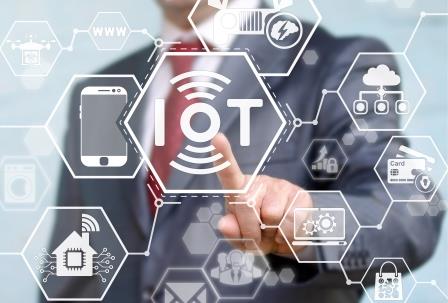When Your Toothbrush Is Hacked: IOT In Media
Home » When Your Toothbrush Is Hacked: IOT In Media
- December 20, 2016

Have you ever imagine watching “The Avengers” hooked on to an automatic pulsating vibrating seat or watching Cookery Show while your room comes live with delectable aromas or your coffee getting brewed on its own right at the beginning of your favorite comedy show or when you are watching the much awaited football match you may see players’ stats superimposed on the screen.
How will your little world transform if you get to use your Living room TV to start your oven or stop the sprinkler system outside or switch off the AC in your bedroom or simply check on your sleeping baby. How about friends residing in different parts of the world watching same TV program and sharing FB reviews or Twitter Account recording the blood alcohol level? Welcome to the world of “TV Everywhere.”- the hottest evolution of “Internet of Things.”
Internet, one of the most powerful creations in all human history, has evolved to its next stage-The Internet of Things or Internet of Objects. The term was coined by Kevin Ashton, founder of MIT’s Auto ID Centre in 1999. In the simplest terms, IoT is the concept of basically connecting any device with an on off switch to the internet. Range of devices may include cellphones, headphones, washing machines, television sets, coffee makers, lamps and almost anything you can think of. Sensors will be key driver in IoT expansion and among the most discussed applications for sensors are smart TV, smart cities, smart environment, water, metering, security and emergency services.
While nearly all types of media and entertainment businesses will benefit from the IoT, publishers and broadcasters are in the lead. The Smart TV seems to be the order of the day. They secure data from several devices and systems, structure detailed consumer profiles and use them to create and instantly deliver personalized content across multiple screens. This data is based on demographic location and behavioral pattern of consumer preference.
The IoT opportunities in the sector of Broadcasters, Cable Networks and Satellite Distributors are mammoth. Connected Broadcasting involves IoT in the truest sense. IoT impacts Broadcasting and Viewing in interesting ways. Your connected TV could automatically pause playback when it detects a doorbell or phone call. Your TV could also consider time of the day, brightness of the room or when did you enter the room. On getting back from vacation, let your TV provide you with absentee content like your favorite show heads-up. Let your home boast of “smart remote” which removes line-of-sight restrictions, open or close curtains and also emit signal on being misplaced. Crowd-sourced weather forecasts will soon be available on your TV screens.
Multiple System Operators (MSOs) are the conventional service providers in households. MSOs, ranging from cable to telco and satellite payTV providers with their existing devices like set-top boxes, remote controls and dongles already function in consumer premises and are now extending their reach over Wi-Fi as multi-service residential gateways. A residential gateway is an instrument that provides voice, video and internet services, but new devices fitted with radios are being created to support IoT protocols like ZWave and ZigBee. These new devices operate physical installation and maintenance on other devices at home reducing capital expenditure it takes to add services. Security of the home gateway is potential way for them to capitalize on their already considerable investment in security for set-top boxes. Samsung’s Smart Home can be perfect example. The company’s Smart TV box is acting as the main interface to connected devices. Privacy and security issues have already been considered by the brand when it made the customers cautious that conversations next to the TV might be recorded. The set-top box plays the heart of smart home.
CISCO IBSG forecasts there will be 50 billion devices connected by 2020 and this will redesign the way we live and work. IoT connections on its network in the media and entertainment vertical increased 120%. The average per-company global IoT spending by media and entertainment organizations was expected to increase nearly 54% over the next three years, to $72.6 million in 2018 from $47.2 million in 2015. According to data from Organization for Economic Cooperation and Development (OECD), the top three nations tethered to the IoT are Korea, Denmark and Switzerland. Siemens has said these smart things are starting to power a fourth Industrial Revolution after steam, electricity and wired computers.

